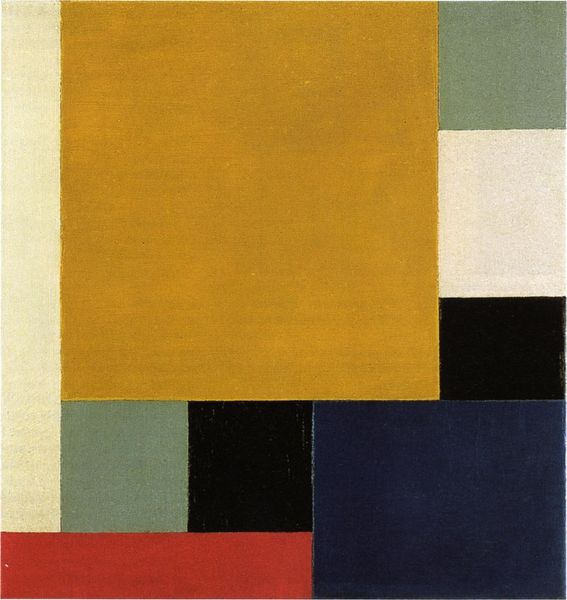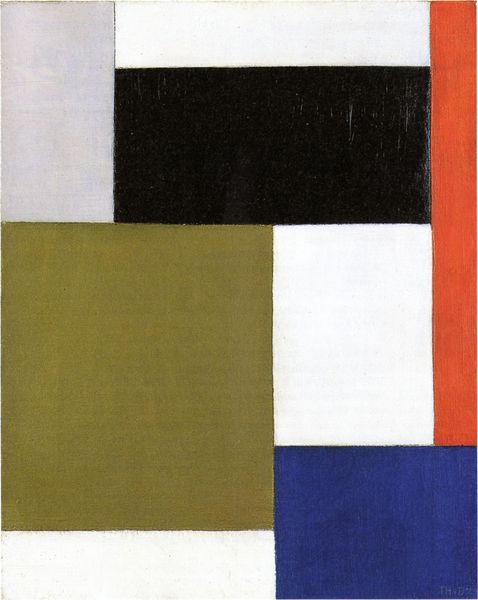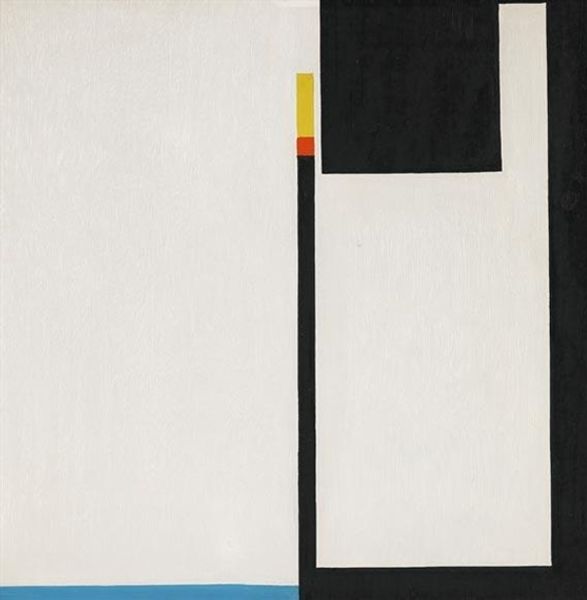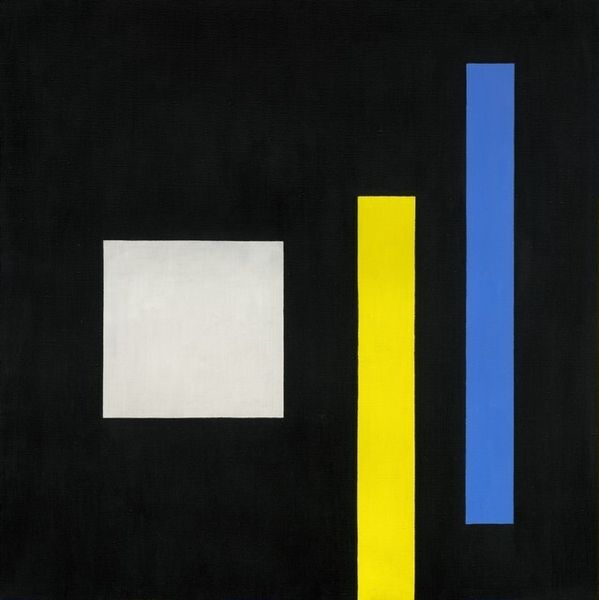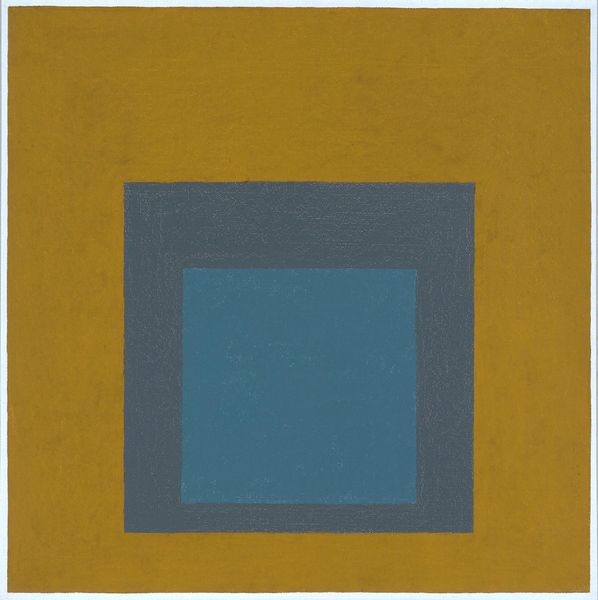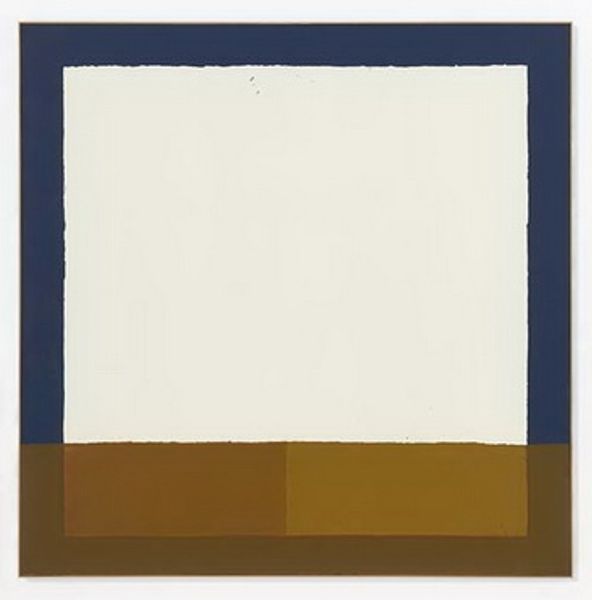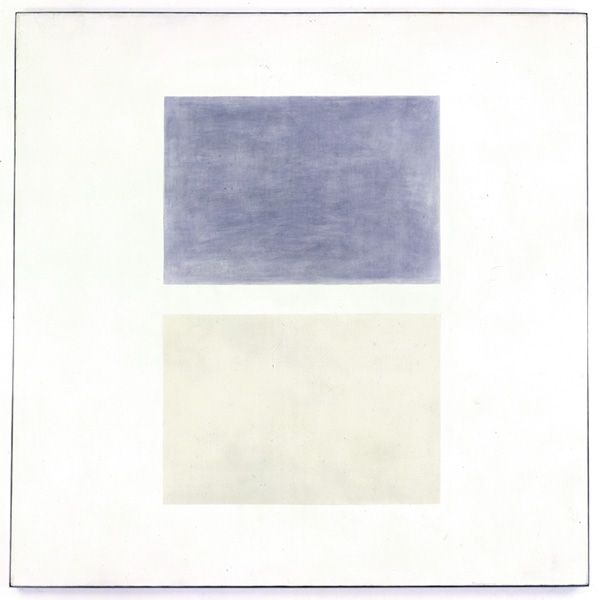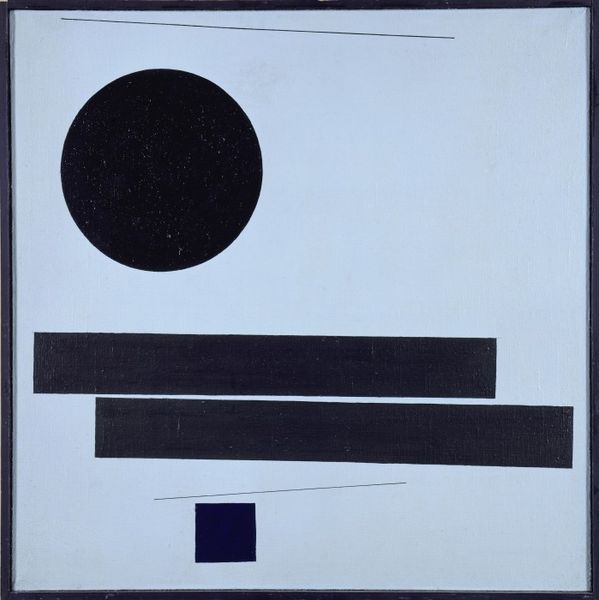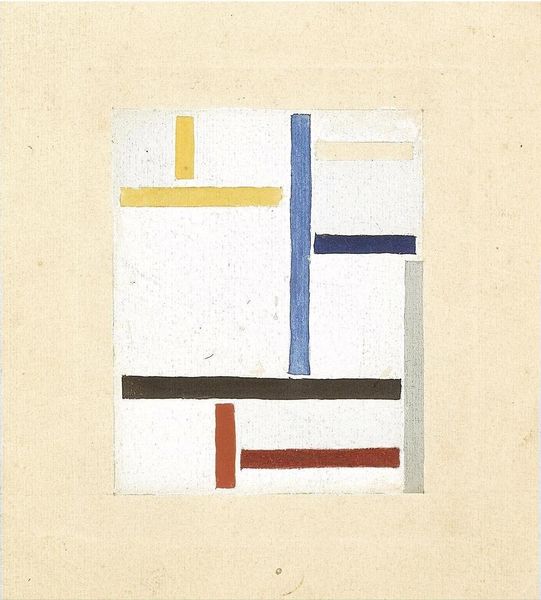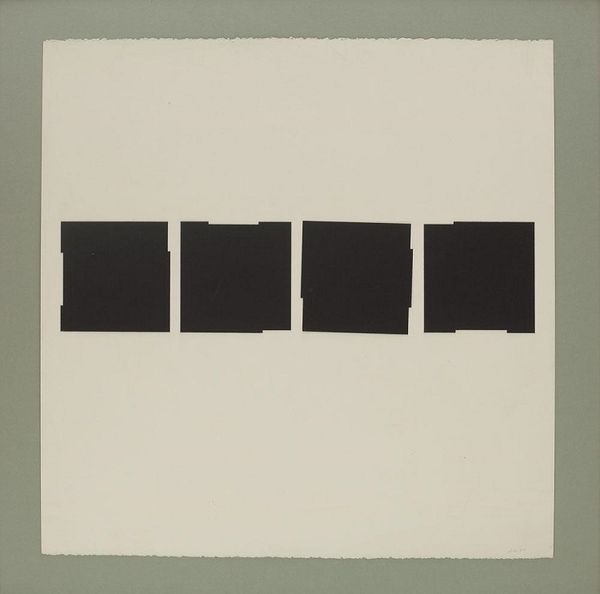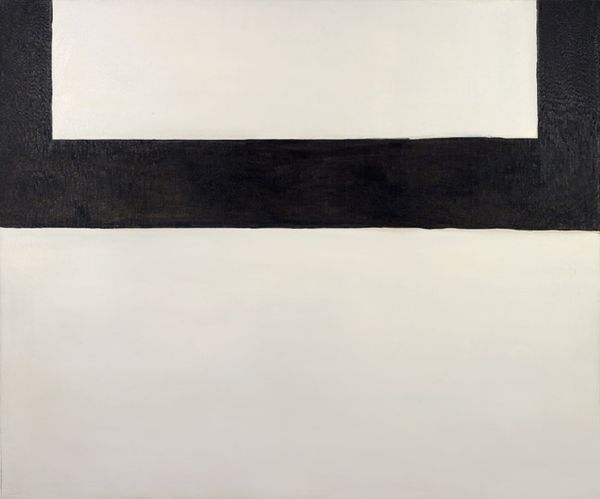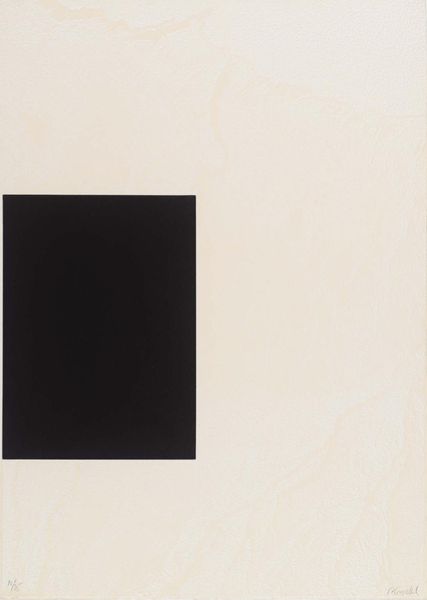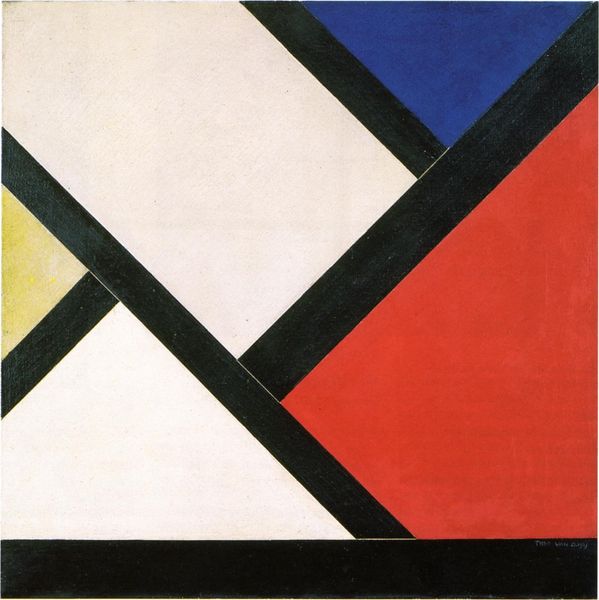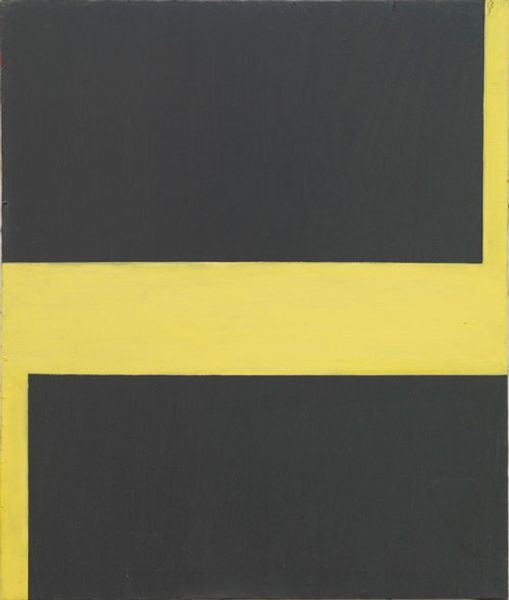
painting, acrylic-paint
#
abstract-expressionism
#
abstract painting
#
painting
#
pop art
#
acrylic-paint
#
form
#
acrylic on canvas
#
geometric
#
geometric-abstraction
#
abstraction
#
line
#
modernism
#
hard-edge-painting
Copyright: Al Held,Fair Use
Curator: Al Held’s "White Square," painted in 1965 with acrylic on canvas, strikes me as deceptively simple. What do you make of it? Editor: Stark. Brutal, almost. That solid black hovering above the ochre feels incredibly heavy, despite the relative lightness of the surrounding white. Curator: And what is that black and gold block embedded in the canvas referencing, historically, do you think? It feels, to me, like an exploration of institutional power, doesn't it? Consider its hard edges and unrelenting geometry; a deliberate manipulation of form meant to instill awe and, frankly, compliance. Held worked in a time of intense social change, from civil rights to escalating war. Do you see any evidence of this artistic backdrop present here? Editor: Absolutely. While abstract, this echoes, for me, the pop art aesthetic, the flatness feels commercial, removed. The unmodulated fields of color, however, create tension, making the geometric abstraction more confrontational than celebratory. The imperfect lines add a handmade human element. Given the turbulent '60s context, the minimalist style might be perceived, as a reaction against the societal turbulence by evoking order. Curator: Precisely. It's as though Held weaponizes formalism to reveal hidden structures within our visual culture. How institutions often present facades that seem ordered, almost pristine – symbolized by that "White Square." Editor: A brilliant point. The contrast feels almost... aggressive, certainly less peaceful than the name suggests. Its reduction to fundamental shapes raises crucial inquiries concerning abstraction, geometric shapes, and hard-edge art. Do you consider the impact that gallery display of “White Square” might have played during Held's era, in the reception of its bold imagery and stark arrangement of its formal elements? Curator: Great thought. It forces the question about audience participation: will its display contribute to viewers questioning the accepted aesthetic and cultural standards, or does it simply contribute towards upholding such traditional values as it showcases? Editor: These considerations demonstrate art's complex connection with the power structures it portrays, which makes encountering artworks like Held's endlessly rewarding for those wanting both a simple aesthetic response as well as those wanting broader societal impacts from an image.
Comments
No comments
Be the first to comment and join the conversation on the ultimate creative platform.
